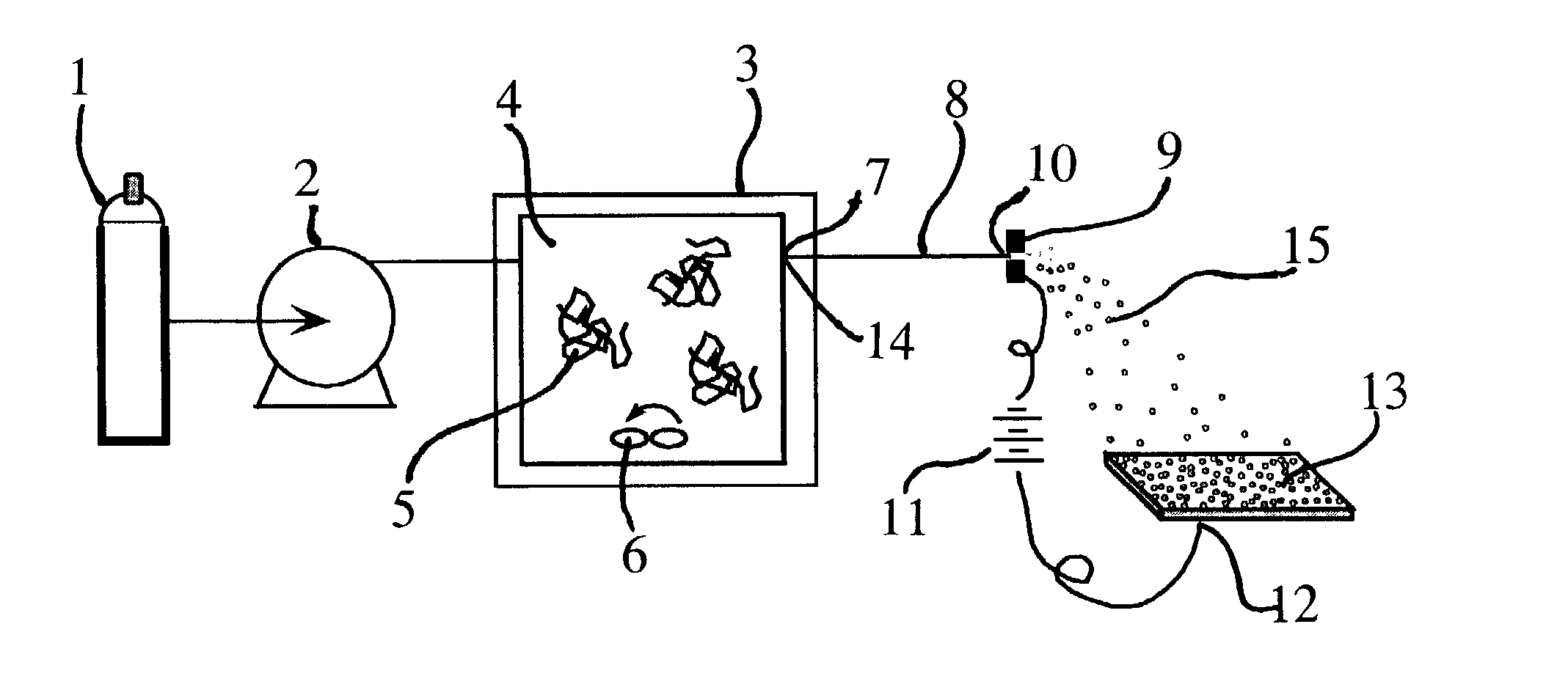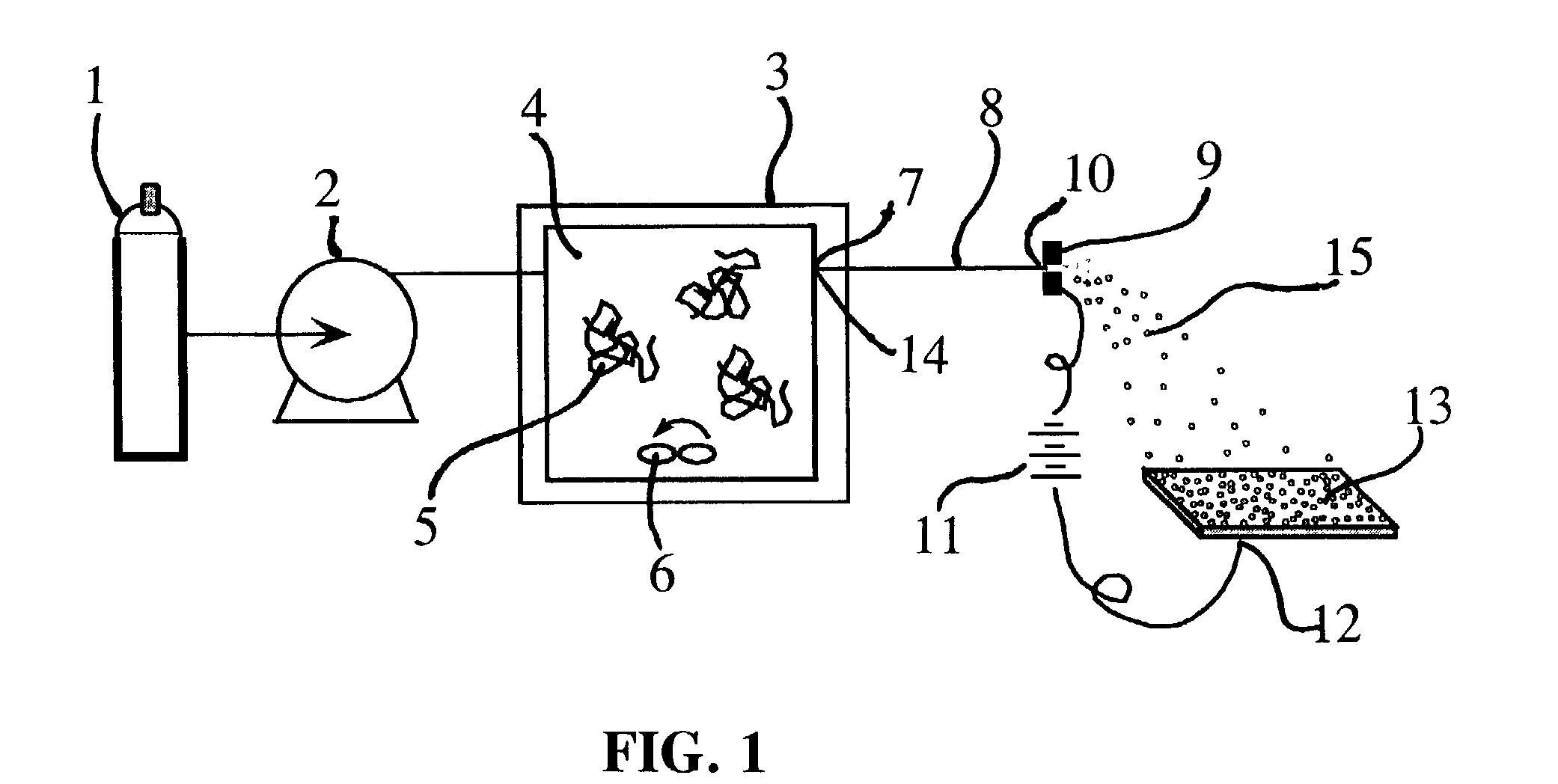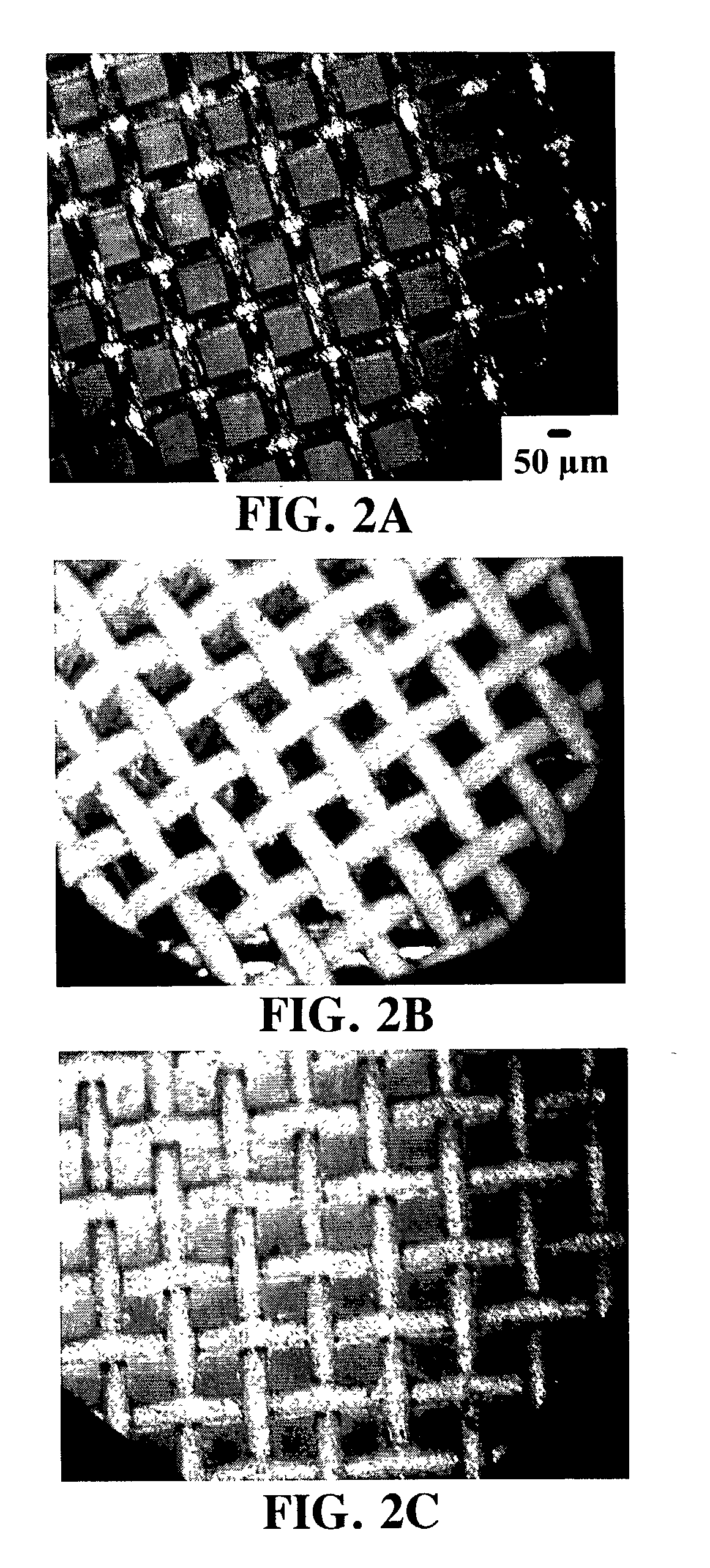Electrostatic deposition of particles generated from rapid expansion of supercritical fluid solutions
a supercritical fluid and electrostatic deposition technology, applied in liquid solution solvent extraction, solvent extraction, separation processes, etc., can solve the problems of insufficient film thickness and uniformity control, difficult or impossible deposition of particles in the range of 10-500 nm on a surface, and high cos
- Summary
- Abstract
- Description
- Claims
- Application Information
AI Technical Summary
Benefits of technology
Problems solved by technology
Method used
Image
Examples
example 1
[0046] Supercritical carbon dioxide solutions of three different fluoropolymer were used to generate different types of coatings on assorted substrates. The first was a copolymer of tetrafluoroethylene / hex-afluoropropylene (19.3%) (TFE / HFP) whose solubility in CO.sub.2 has been previously reported by Tuminello et al., Dissolving Perfluoropolymers in Supercritical Carbon Dioxide, Macromolecules 1995, 28, 1506-1510 and Rindfleisch et al., Solubility ofPolymers and Copolymers in Supercritical CO.sub.2, J. Phys. Chem. 1996, 100, 15581-15587. The second was a copolymer of tetrafluoroethylene / hexafluoropropylene / vinylidene fluoride (THV 220A) that was used as received from Dyneon LLC, 6744 33.sup.rd Street North, Oakdale, Minn. 55128. This polymer has a reported melting point of 120.degree. C. The third polymeric material, poly(1,1-dihydroperfluorooctylacrylate) or PFOA, was synthesized using methods described in DeSimone et al., Science 1992, 257, 945-947. Each of these materials was dis...
example 2
[0049] A fluorescent organic compound, coumarin 153, was mixed into the supercritical fluid solution with the THV polymer at a dye-to-polymer mass ratio of 1:20 at the conditions described above. These materials by themselves do not form a solid solution. A uniform particle matrix coating was again generated but in this case the coating had a distinct yellow hue characteristic of the dye. Under a high-power fluorescence microscope the coating was strongly fluorescent although individual dye particles cannot be resolved. A rapid photo-bleaching (approximately 5 sec half life) of the coating was visually observed, possibly because of the finely divided nature of the dye particles.
example 3
[0050] The RESS process for the TFE / HFP polymer was adjusted to produce a mixture of ultra-fine fibers and particles. In this case, the pressure of the supercritical solution in the pressurized vessel 3 upstream of the capillary restrictor nozzle 8 was just slightly above the cloud point pressure. Under these conditions a phase separation occurs within the capillary restrictor nozzle 8 generating a polymer-rich liquid phase that wets the wall of the capillary. Upon exiting the capillary tip, this viscous liquid phase is drawn into ultra-small fibers. Since the screen is positioned away from the high-velocity RESS jet, the fiber migration to this substrate is primarily driven by the electrostatic forces as is the case for the ultra-small particles.
PUM
| Property | Measurement | Unit |
|---|---|---|
| mean particle size | aaaaa | aaaaa |
| mean particle size | aaaaa | aaaaa |
| weight percent | aaaaa | aaaaa |
Abstract
Description
Claims
Application Information
 Login to View More
Login to View More - R&D
- Intellectual Property
- Life Sciences
- Materials
- Tech Scout
- Unparalleled Data Quality
- Higher Quality Content
- 60% Fewer Hallucinations
Browse by: Latest US Patents, China's latest patents, Technical Efficacy Thesaurus, Application Domain, Technology Topic, Popular Technical Reports.
© 2025 PatSnap. All rights reserved.Legal|Privacy policy|Modern Slavery Act Transparency Statement|Sitemap|About US| Contact US: help@patsnap.com



